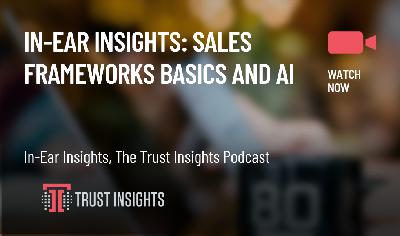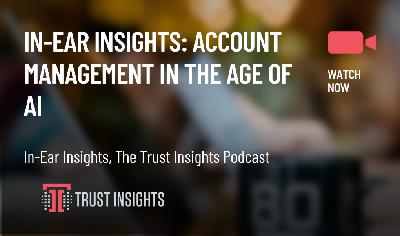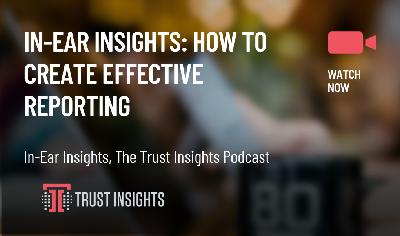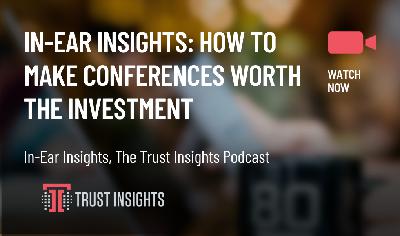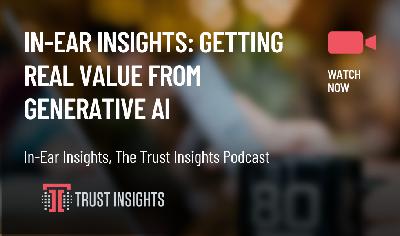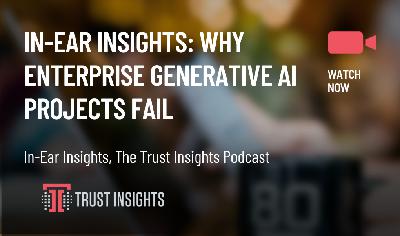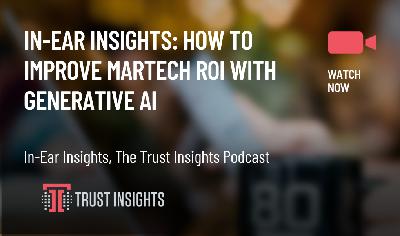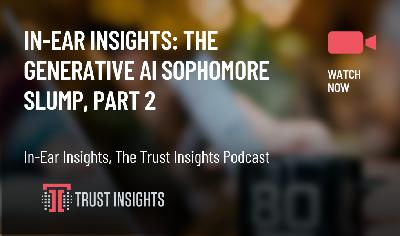In-Ear Insights: Reviewing AI Data Privacy Basics
Description
In this episode of In-Ear Insights, the Trust Insights podcast, Katie and Chris discuss AI data privacy and how AI companies use your data, especially with free versions. You will learn how to approach terms of service agreements. You will understand the real risks to your privacy when inputting sensitive information. You will discover how AI models train on your data and what true data privacy solutions exist. Watch this episode to protect your information!
Watch the video here:
Can’t see anything? Watch it on YouTube here.
Listen to the audio here:
https://traffic.libsyn.com/inearinsights/tipodcast-ai-data-privacy-review.mp3
- Need help with your company’s data and analytics? Let us know!
- Join our free Slack group for marketers interested in analytics!
[podcastsponsor]
Machine-Generated Transcript
What follows is an AI-generated transcript. The transcript may contain errors and is not a substitute for listening to the episode.
Christopher S. Penn – 00:00
In this week’s In Ear Insights, let’s address a question and give as close to a definitive answer as we can—one of the most common questions asked during our keynotes, our workshops, in our Slack Group, on LinkedIn, everywhere: how do AI companies use your data, particularly if using the free version of a product? A lot of people say, “Be careful what you put in AI. It can learn from your data. You could be leaking confidential data. What’s going on?” So, Katie, before I launch into a tirade which could take hours long, let me ask you, as someone who is the less technical of the two of us, what do you think happens when AI companies are using your data?
Katie Robbert – 00:43
Well, here’s the bottom line for me: AI is any other piece of software that you have to read the terms in use and sign their agreement for. Great examples are all the different social media platforms. And we’ve talked about this before, I often get a chuckle—probably in a more sinister way than it should be—of people who will copy and paste this post of something along the lines of, “I do not give Facebook permission to use my data. I do not give Facebook permission to use my images.”
And it goes on and on, and it says copy and paste so that Facebook can’t use your information. And bless their hearts, the fact that you’re on the platform means that you have agreed to let them do so.
Katie Robbert – 01:37
If not, then you need to have read the terms, the terms of use that explicitly says, “By signing up for this platform, you agree to let us use your information.” Then it sort of lists out what it’s going to use, how it’s going to use it, because legally they have to do that. When I was a product manager and we were converting our clinical trial outputs into commercial products, we had to spend a lot of time with the legal teams writing up those terms of use: “This is how we’re going to use only marketing data. This is how we’re going to use only your registration form data.” When I hear people getting nervous about, “Is AI using my data?” My first thought is, “Yeah, no kidding.”
Katie Robber


